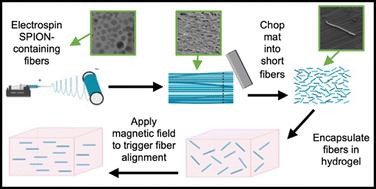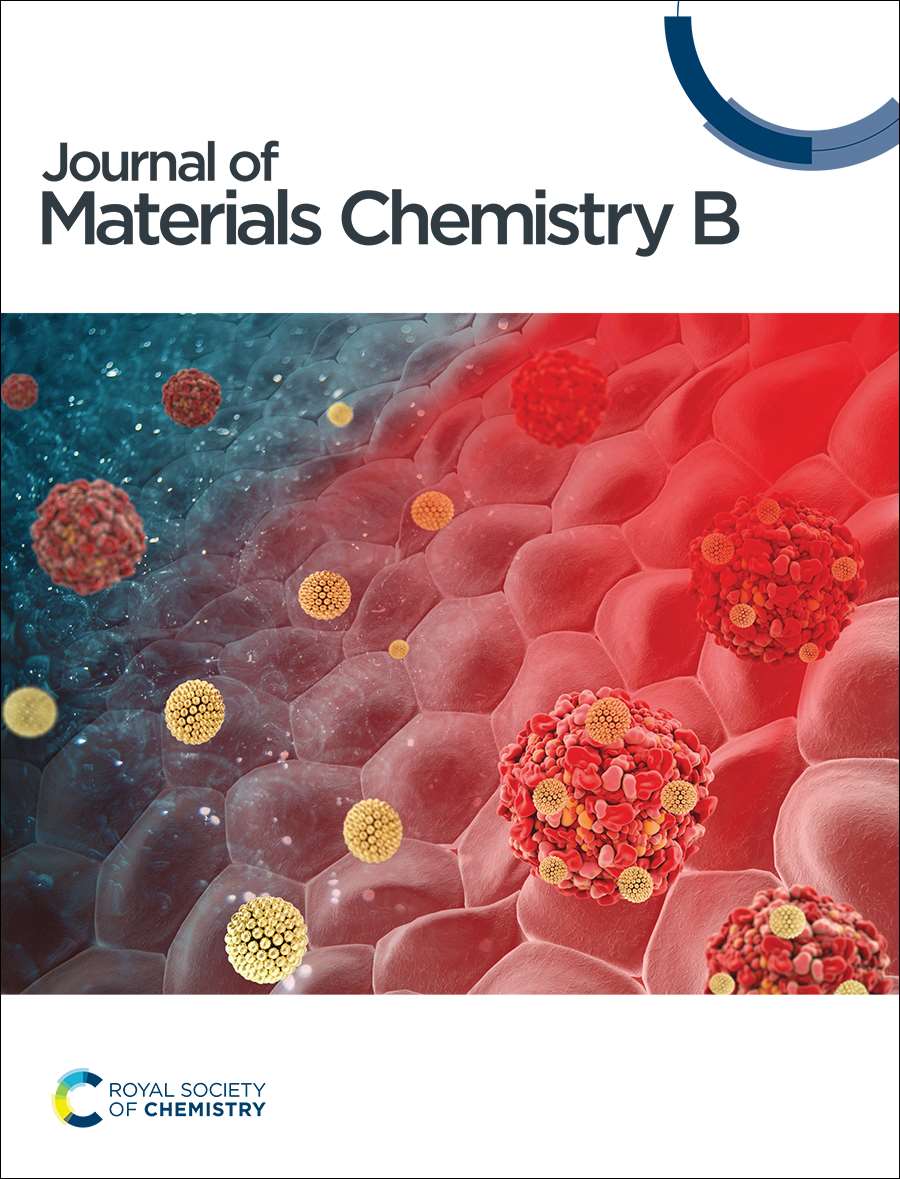Temporal and spatial control over fiber alignment within hyaluronic acid hydrogels using magnetic fields
IF 6.1
3区 医学
Q1 MATERIALS SCIENCE, BIOMATERIALS
引用次数: 0
Abstract
Wound healing is tightly regulated in both space and time. To mimic this behavior, we designed magnetically-responsive, fiber–hydrogel composites. When covalently crosslinked hydrogels were combined with layer-by-layer stacking, we demonstrated precise spatial control over fiber orientation. For temporal control, we used non-covalently crosslinked hydrogels to enable in situ fiber alignment.

利用磁场对透明质酸水凝胶内纤维排列的时空控制。
伤口愈合在空间和时间上都受到严格的调控。为了模拟这种行为,我们设计了具有磁响应的纤维水凝胶复合材料。当共价交联水凝胶与逐层堆叠相结合时,我们证明了对纤维取向的精确空间控制。为了控制时间,我们使用非共价交联水凝胶来实现原位纤维排列。
本文章由计算机程序翻译,如有差异,请以英文原文为准。
求助全文
约1分钟内获得全文
求助全文
来源期刊

Journal of Materials Chemistry B
MATERIALS SCIENCE, BIOMATERIALS-
CiteScore
11.50
自引率
4.30%
发文量
866
期刊介绍:
Journal of Materials Chemistry A, B & C cover high quality studies across all fields of materials chemistry. The journals focus on those theoretical or experimental studies that report new understanding, applications, properties and synthesis of materials. Journal of Materials Chemistry A, B & C are separated by the intended application of the material studied. Broadly, applications in energy and sustainability are of interest to Journal of Materials Chemistry A, applications in biology and medicine are of interest to Journal of Materials Chemistry B, and applications in optical, magnetic and electronic devices are of interest to Journal of Materials Chemistry C.Journal of Materials Chemistry B is a Transformative Journal and Plan S compliant. Example topic areas within the scope of Journal of Materials Chemistry B are listed below. This list is neither exhaustive nor exclusive:
Antifouling coatings
Biocompatible materials
Bioelectronics
Bioimaging
Biomimetics
Biomineralisation
Bionics
Biosensors
Diagnostics
Drug delivery
Gene delivery
Immunobiology
Nanomedicine
Regenerative medicine & Tissue engineering
Scaffolds
Soft robotics
Stem cells
Therapeutic devices
 求助内容:
求助内容: 应助结果提醒方式:
应助结果提醒方式:


